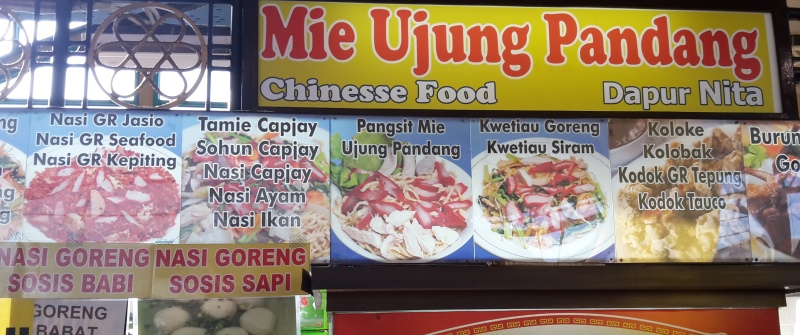
08 Sep Blog: The Chinese dialect that influenced the Low Lands (but has rarely been appreciated for it…)
By Tom Hoogervorst
While many Dutch people know about Mandarin and Cantonese, few are familiar with Hokkien, an oft-neglected Chinese dialect that prevails in southern China, Taiwan, and many parts of Southeast Asia. It has had an unmistakable influence on the Dutch language, as Tom Hoogervorst demonstrates through the following 10 examples.
But first, I should highlight that Hokkien is actually not a dialect at all! It’s largely unintelligible to speakers of other Chinese languages, has its origins in China’s Fujian Province, and currently boasts about 24 million speakers. For many centuries, Hokkien was crucial to the South China Sea trade, connecting China with Southeast Asia and beyond.
As such, most Chinese loanwords in Malay originate from Hokkien. Its prevalence in the Netherlands Indies was also the reason that it was intensively studied by 19th-century Dutch Sinologists. But how did Hokkien end up influencing the Dutch language itself?
Mostly through Malay! The following 10 words can still be heard in everyday Dutch conversations.
Starting off with some borrowings in the realm of transportation, betjak is the most common Dutch term for a cycle rickshaw (pedicab), echoing Hokkien bé chhia (馬車), originally a ‘horse cart’. The word sampan is used for a flat-bottomed wooden boat and reflects Hokkien sam pán (舢板 or三板), ‘three boards’. It has also been introduced into the Netherlands:
“In de Alblasserwaard kan je per sampan het natuurschoon verkennen.” (In the Alblasserwaard, one can explore the beauty of nature from a sampan boat)
Other terms are related to trade. Kongsi goes back to the Hokkien word for ‘trading company’ or ‘clan house’, kong si (公司), but in colloquial Dutch it refers to an opportunistic alliance between two (groups of) people:
“Als Rita Verdonk nou gewoon een kongsi had gesloten met Geert Wilders dan zat ze nu nog in de Tweede Kamer.” (If only Rita Verdonk would have formed an alliance with Geert Wilders, she’d still be in the Lower House of Parliament.)
Another business term is the word toko; a store that sells Chinese or Indonesian products. The original meaning in Hokkien was that of ‘warehouse’ or ‘trade factory’: thô· khò· (土庫). In colloquial Dutch, however, we often see it used in the meaning of a commercial establishment in general:
“Als ik nu niet héél snel mijn appelkruimeltaart krijg sla ik hier de hele toko kort en klein!” (If I don’t get my apple crumble really fast, I’ll smash this place to bits!)
Several types of Asian products sold in the toko have become as Dutch as a cheese sandwich in a field of tulips surrounded by windmills. Soy sauce is called ketjap, spring rolls are known as loempia’s, rice vermicelli as mihoen, and mung bean sprouts as taugé, reflecting Hokkien kê chiap (鮭汁), lūn pián (潤餅), bí hún (米粉) and tāu gê (豆芽). Bami, a noodle dish with meat or shrimps, comes from Hokkien bah mīn (肉麵). In Dutch, it has become the default term for noodles:
“Eigenlijk is spaghetti natuurlijk gewoon een soort van bami, maar toen ik dat vorige week tegen Emanuele zei verwijderde hij me diezelfde avond nog van Facebook.” (Spaghetti is obviously just another type of noodles, but when I said so to Emanuele last week, he deleted me from Facebook that very evening.)
However, the award for most successful Hokkien contribution to the lexicons of the world goes to ‘tea’ – or thee in Dutch. As the Dutch East India Company chiefly imported this popular drink from the Hokkien-speaking areas of China, the form tê (茶) has spread throughout the world.
Like other minority languages today, the position of Hokkien is under threat from national languages, such as Mandarin, English and Indonesian. Nevertheless, a growing number of enthusiasts are campaigning to ensure that their beloved language can be heard in the world of films, television, and social media. After all, doing so would only be commensurate with its historical importance.
(Tom Hoogervorst focuses on language contact and Malay linguistics. He is currently studying the development of the (Indonesian) Malay language through the KITLV’s collection of Sino-Malay literature, while simultaneously attempting to cast a new light on cultural contact, the introduction of new concepts and the role of popular culture during late 19th and early 20th centuries.)




Fred Sengers
Posted at 10:48h, 12 SeptemberWat interessant om te lezen, Tom. Ik dacht dat veel van die leenwoorden uit het Bahasa stamden. Leuk om te leren dat ze indirect uit China stammen. Weer een feitje om aan de tap indruk mee te maken!
Baba Eugene
Posted at 02:45h, 16 SeptemberRather than attribution to either Malay or Hokkien, it is worth looking at what is in the “peranakan” dialect which fuse the vocabulary of both languages.